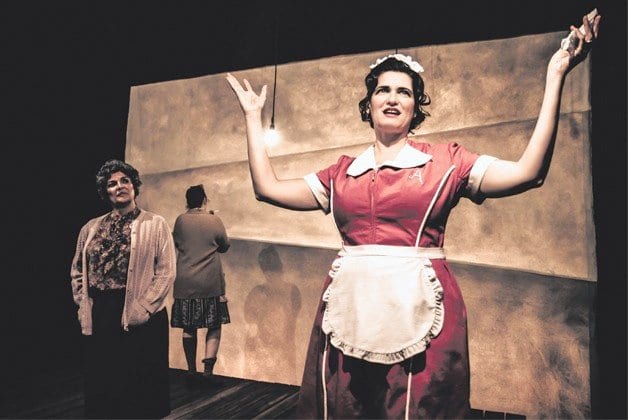
Director Jean-Stéphane Roy says Tremblay is "one of the only male writers who really understands women."
Celebrated writer Michel Tremblay’s work has always been greatly inspired by the people he encountered growing up, whether family members or neighbours. Montreal’s working-class Plateau neighbourhood is a favourite setting, and the same characters have a habit of popping up over and over in his expansive catalogue of plays, novels and short stories.
One particular character shows up more than others: the rage-filled Albertine, subject of Albertine in Five Times.
“I think she’s his favourite,” says director Jean-Stéphane Roy. “She was in some of his earliest plays, and she’s all over his novels. She’s a bit of a drag queen, actually, very fast in her venom and always looking to destroy people. In real life you couldn’t stand her, but onstage she’s perfect because she’s bigger than life.”
First staged in 1984, the piece features five actresses playing the character at different ages. After her husband is killed during the war, Albertine is left to raise their children alone and in poverty. We follow her from the aftermath of nearly beating her daughter to death, through depression, reinvention and ultimately peace. The character is based on Tremblay’s Aunt Robertine and appeared under that name in his early works. When one of his plays was adapted for television in 1973 she was enraged by his portrayal of her, so he began using a pseudonym.
The work is also a window to one of Quebec’s most difficult periods. Known as “La Grande Noirceur” (the Great Darkness) the tumultuous era under the rule of Premier Maurice Duplessis saw the implementation of a staunch conservative ideology.
“It was a period where Quebec society had little respect for women and was still really being led by the church,” Roy says. “She’s a character gay people can connect with because she’s an outsider in that society. She’s tried to fit in, but she can’t. And that’s where a lot of her anger comes from.”
Tremblay was raised largely by his mother and his aunts while his father was away working, and many of his works centre on female characters.
“He’s one of the only male writers who really understands women,” Roy says. “Most of his works are about women, but his characters are so universal. Many of his stories come from his own life and the people around him. He shows us that the more personal you are with your writing, the more universally it will be read.”
Albertine en cinq temps (Albertine in Five Times)
Runs until Sun, April 28
Théâtre français de Toronto
Berkeley Street Theatre Upstairs
26 Berkeley St
Includes several performances with English surtitles
Fundraising gala and show: Thurs, April 25, 6 pm
$125 (surtitled performance at 7:30pm)
theatrefrancais.com


 Why you can trust Xtra
Why you can trust Xtra


